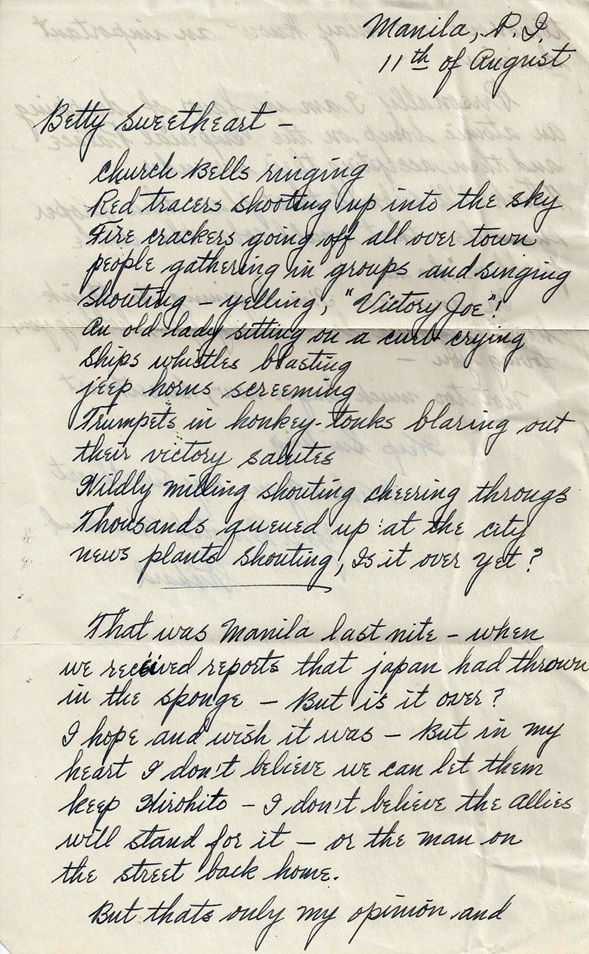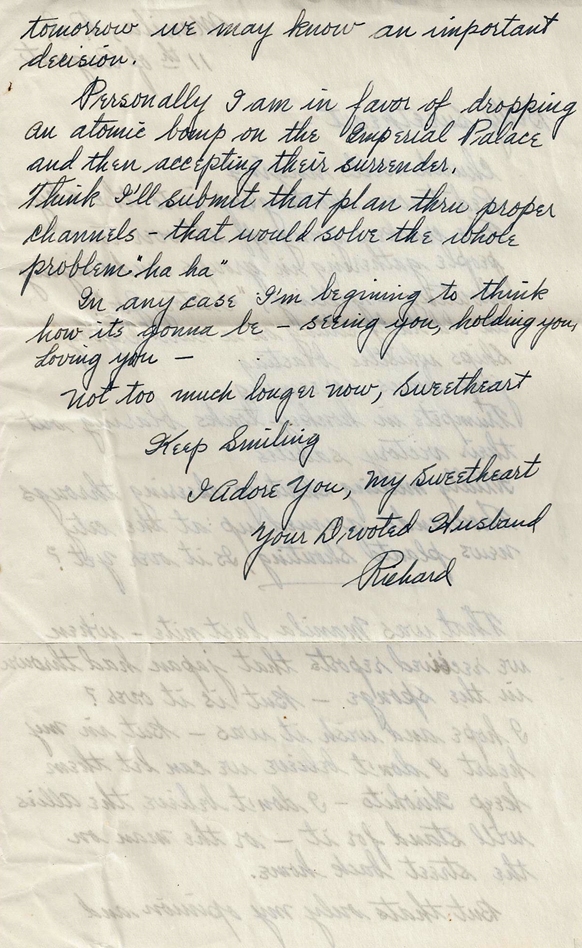
Even after Hiroshima and Nagasaki, the Japanese Imperial Council split 3-3 on surrender. After debating most of 9 August, at about 02:30 a.m. on 10 August Hirohito intervened and broke the tie in favor of surrender -- the first time since 1895 that an Emperor had intervened -- saying "I swallow my tears and give my sanction to the proposal to accept the Allied proclamation on the basis outlined by the Foreign Minister."
The Foreign Ministry sent telegrams to the allies (via the Swiss) on 10 August announcing that Japan would accept the terms of the Potsdam declaration, but only if they would not "prejudice the prerogatives" of the Emperor.
This communication is what sparked the celebration in Manila described in Richard's letter (and his remarks about keeping the Emperor.) Actual surrender was a few days off (see letter of 15 August, 1945), following greatly intensified conventional aerial and naval bombardment of the home islands. (No additional atomic bombs were available, though one more was being assembled. The dropping of the two available atomic bombs in rapid succession was intended, and did, give the Japanese the impression that the U.S. had a large supply.)


